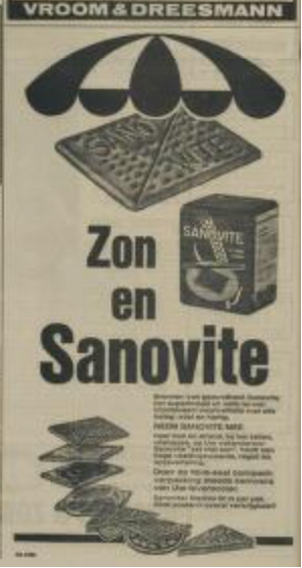Almost every Dutch person is familiar with LiGA biscuits. For me, these biscuits are especially linked to my primary school experience. I haven’t eaten them in about twelve years, but even the thought of them serves as a gateway to my childhood memories. In 2023, the brand celebrated its 100th anniversary. During this time, the definition of what we consider healthy and nutritious has changed tremendously. The evolution of the LiGA brand reflects these changes in Dutch food history.
The LiGA brand was founded in 1923 and originally focused on biscuit manufacturing. The factories began as a collaboration among several local bakeries in Bergen op Zoom. The name “LiGA” comes from this mutual association, the LiGA. The brand gained national fame in 1928 by providing food aid. In June of that year, the airship Italia crashed during a North Pole expedition led by Umberto Nobile, creating an urgent need for food. This call for help prompted Mr. Neutelings to organize a relief expedition within 24 hours, resulting in a shipment of ten thousand LiGA products for Nobile and his men. All the major Dutch newspapers extensively reported on the event.

Their first success was the “kinderbiscuits,” developed as the first nutritious biscuits for children. At the time, many children were still dying from a lack of nutritious food, so there was a significant market for them. Following that, in 1932, LiGA introduced “Sanovite,” the first cracker in the Netherlands, marketed as a bread substitute. The Institute for Public Nutrition collaborated with LiGA to make a scientific contribution to the development of LiGA Sanovite, which quickly became known as “super bread.” This product still exists under the brand name Vitalu.

‘The LiGA Child’ (West-Brabants Archief, https://westbrabantsarchief.nl/collectie/beeldbank/detail/383d3843-3800-4adb-9219-0e367315040f/media/99810a0f-d1e7-4bc8-a6d8-0e13771cea7d)’
After World War II, the factory buildings in Bergen op Zoom became too small for the growing production. A new factory opened in Roosendaal in 1953, which was expanded with a laboratory specializing in nutritional analyses. The laboratory became an essential aspect of the company, with increased focus on nutrition and nutritional education aimed at doctors and dietitians. To this day, LiGA collaborates closely with both internal and external nutritionist. The 1960s marked a turning point for the brand. With the introduction of the contraceptive pill, birth rates declined, leading to reduced demand for children’s products. Additionally, according to newer scientific insights, LiGA biscuits were no longer considered a responsible snack but rather just a sweet treat. Dentists began advising against them due to their stickiness, and consultation bureaus no longer automatically recommended them as the best children’s food. Competition increased with the emergence of brands like Olvarit.

The product “Evergreen,” launched in 1979, was marketed as the “first responsible snack.” Its development was based on “The Good Nutrition Guidelines,” which provide recommendations based on scientific research regarding beneficial and harmful foods and nutrients. To cater to adults and older children, LiGA introduced other snacks, such as LiGA Oat Biscuits in 1983 and LiGA Milk Biscuits in 1985.
Today, LiGA brands itself as part of the everyday lives of Dutch people:
“LiGA is there for the everyday perseverers, the die-hards, and the tough ones—those who start another day filled with a thousand tasks, dreams, and disappointments with good courage. From working from home to exercising at home, from keeping up with friends to managing an overflowing inbox. Whether you’re sprinting for gold or just for the fun of it, you can only do your best! Checking off your to-do list and conquering your ambitious agenda can feel great, but it doesn’t always go smoothly; sometimes, you just need a little push.”1
The variety of LiGA products has expanded. According to the Consumers’ Association, many LiGA snacks contain too much sugar. However, the Evergreen biscuit is still considered the healthiest snack among all biscuits. According to the Nutri-Score, an independent nutritional logo that allows consumers to compare the healthiness of products, this snack scores a B.
It will be interesting to see how the LiGA brand responds to this criticism. The introduction of a healthier version of the Evergreen biscuit and the LiGA protein bar are examples of their efforts to enhance the brand’s reputation. According to Jan Willem Balk, the director of LiGA’s production company, there is a moral tension in this discussion. Consumers expect biscuits to be tasty; to achieve this flavor, sugars and fats are often necessary. Additionally, consumers have the right to self-determination. If they wish to treat themselves to a tasty snack, that should be possible.
Rense Ytsma
